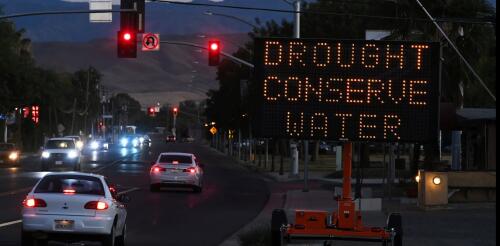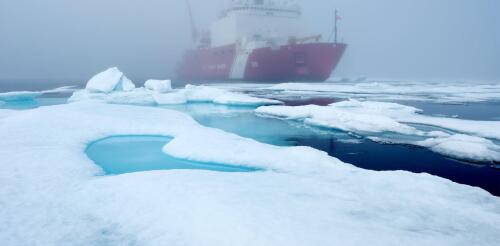Climate change
Texans like to think of their state as the energy capital of the world. But in mid-February 2021, the energy state ran short of energy. An intense winter weather outbreak, informally dubbed Winter Storm Uri by the Weather Channel, swept across the U.S., bringing snow, sleet, freezing rain and frigid temperatures. Texas was hit especially hard, with all 254 counties under a winter storm warning at the same time. Across the state, sustained arctic temperatures froze power plants and fuel supplies, while energy demand for home heating climbed to all-time highs. Cascading failures in the electric power and natural gas sectors left millions of people in the dark for days. At least 246 people died, possibly many more, and economic damage estimates damages reached US$130 billion. Water systems, which require energy for pumping and treatment, also were severely damaged. At least 10 million people were under boil-water notices during and after the storm, sometimes for weeks. Low-incom...
Even after heavy snow and rainfall in January, western states still face an ongoing drought risk that is likely to grow worse thanks to climate change. A whopping snowpack is good news, but it doesn’t reduce the need for long-term planning. Confronted with a shrinking supply of water for agriculture, industry and residential uses, water agencies have pursued different strategies to encourage water conservation. They have nudged customers to reduce water use, limited outdoor watering and offered incentives to rip out lawns. On the supply side, there are innovative ideas about using heavy rains to recharge groundwater. Basic economics teaches us that a higher price for water would encourage conservation. Up until now, however, concerns about harming low-income households have limited discussions about raising water prices to reduce demand. We know that it’s hard to pay more for essential goods such as food, energy and water, especially for lower-income households. R...
Most people associate hurricanes with high winds, intense rain and rapid flooding on land. But these storms can also change the chemistry of coastal waters. Such shifts are less visible than damage on land, but they can have dire consequences for marine life and coastal ocean ecosystems. We are oceanographers who study the effects of ocean acidification, including on organisms like oysters and corals. In a recent study, we examined how stormwater runoff from Hurricane Harvey in 2017 affected the water chemistry of Galveston Bay and the health of the bay’s oyster reefs. We wanted to understand how extreme rainfall and runoff from hurricanes influenced acidification of bay waters, and how long these changes could last. Our findings were startling. Hurricane Harvey, which generated massive rainfall in the Houston metropolitan area, delivered a huge pulse of fresh water into Galveston Bay. As a result, the bay was two to four times more acidic than normal for at least three...
Atmospheric rivers, those long, powerful streams of moisture in the sky, are becoming more frequent in the Arctic, and they’re helping to drive dramatic shrinking of the Arctic’s sea ice cover. While less ice might have some benefits – it would allow more shipping in winter and access to minerals – sea ice loss also contributes to global warming and to extreme storms that cause economic damage well beyond the Arctic. I’m an atmospheric scientist. In a new study of the Barents-Kara Seas and the neighboring central Arctic, published Feb. 6, 2023, in Nature Climate Change, my colleagues and I found that these storms reached this region more often and were responsible for over a third of the region’s early winter sea ice decline since 1979. More frequent atmospheric rivers By early winter, the temperature in most of the Arctic is well below freezing and the days are mostly dark. Sea ice should be growing and spreading over a wider area. Yet the...
Rising trade tensions between the U.S. and the European Union, two of the most important global leaders when it comes to climate policy, could undermine key climate initiatives of both governments and make it harder for the world to put the brakes on climate change. The two have clashed over the 2022 Inflation Reduction Act’s requirements that products be made in America to receive certain U.S. subsidies. The EU recently announced plans for its own domestic-only clean technology subsidies in response. The U.S. and EU also now have competing carbon tariff proposals, and these could end up undermining each other. In December 2022, the EU reached a provisional agreement on a carbon border adjustment mechanism. It will put carbon-based tariffs on steel, aluminum and other industrial imports that aren’t regulated by comparable climate policies in their home countries. The Biden administration, meanwhile, proposed a “green steel club” of nations that would coo...




